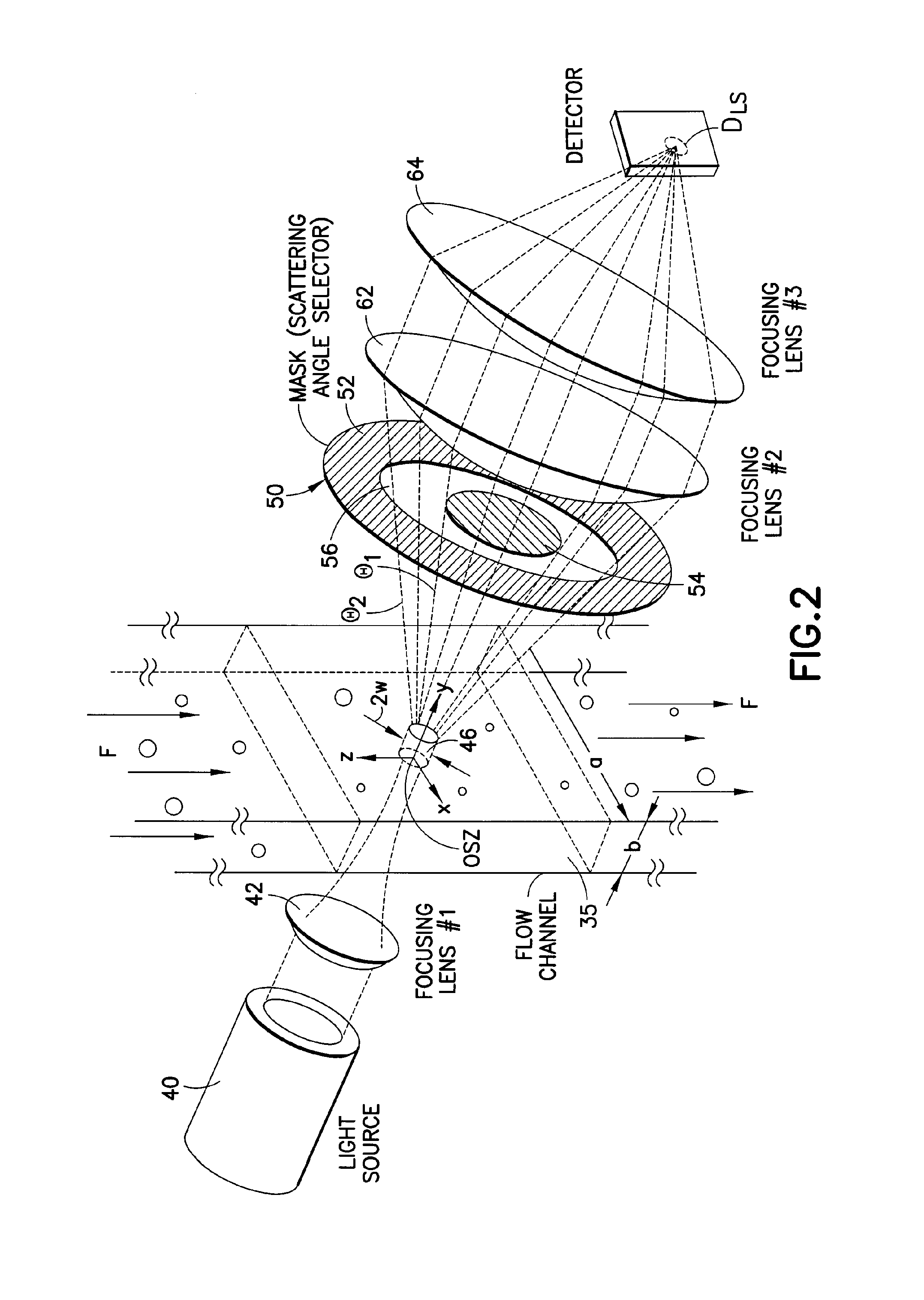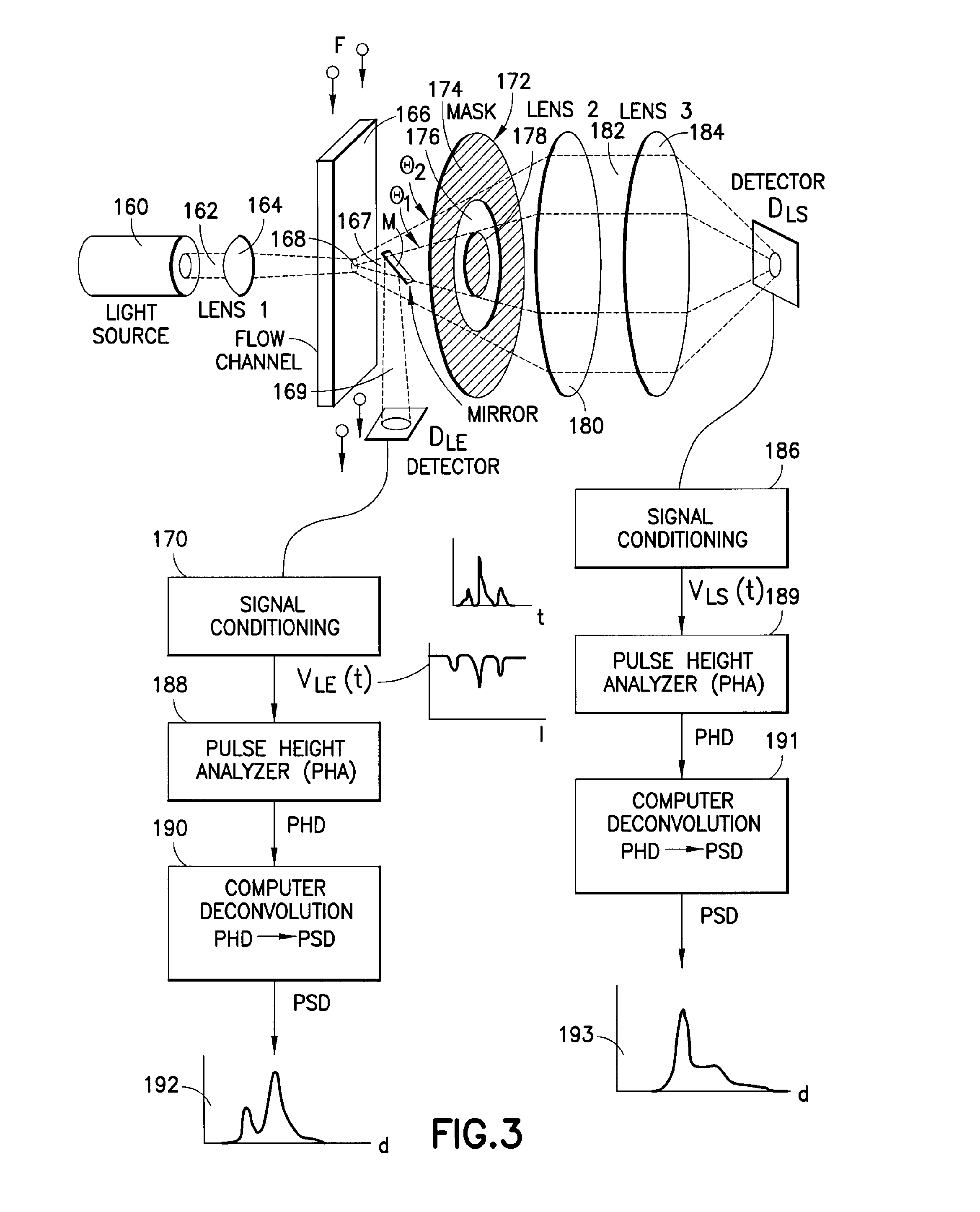Use of focused light scattering techniques in biological applications
a technology of biological particles and focused light, applied in the field of biological particle optical sensing, can solve the problem of limited size of biological particles that can be analyzed using currently available technology, and achieve the effect of high throughput screening
- Summary
- Abstract
- Description
- Claims
- Application Information
AI Technical Summary
Benefits of technology
Problems solved by technology
Method used
Image
Examples
example 1
Detection of Microparticle's (MP) Present in a Biological Sample
[0196]In this example, a specimen is subject to particle sizing and counting. After an appropriate dilution of the sample, the diluted specimen is introduced into the device for analysis. As counting proceeds, counts will accumulate in the size region less that 1 micron. The appearance of MP in this size region will indicate the presence of MP's.
example 2
Microparticle Characterization
[0197]Once MP's are detected, as described in Example 1, it may be important to determine the source of the MP (from platelets neutrophils, tumor cell, etc.). This Example provides two different options for characterizing the MP.
[0198]The first option is to use MP sizing and counts. In this case, the specimen is incubated with a second particle with a specific ligand conjugated to its surface. The choice of the ligand will depend on the specific MP be characterized. For example, if the MP of interest has coagulation tissue factor (TF) on its surface, the conjugated particle can be conjugated with an antibody against TF-particle or with coagulation factor FVII. Either ligand will specifically bind to MP's with TF on their surfaces.
[0199]When the conjugated particles are incubated with the anti-TF conjugated particles, a new size corresponding to the TF-MP+anti-TF-particles will appear when the MP and the probe particle are counted. In a like manner, othe...
example 3
Determination of Cellular Activation
[0202]In this Example, the cellular activation, such as platelet activation, is determined. A baseline resting platelet run on the sizing-counting device is determined. The platelet or cell is then activated using appropriate agonists. Once activation occurs, new surface epitopes appear on the surface. In the case of the platelet DC62, CD41, various integrins, and the like, begin to appear.
[0203]A probe particle with a ligand for the specific epitope of interest is then added to the activated platelets (or other cells). The ligand can be an antibody, or small molecule, that specifically binds to the activated epitope. When binding occurs, a particle is created (the activated cell+the probe particle) which has a larger size than either the activated cell or the probe particle. The appearance of these new particles represents the appearance of the activated platelet+the bound probe particle.
PUM
 Login to View More
Login to View More Abstract
Description
Claims
Application Information
 Login to View More
Login to View More - R&D
- Intellectual Property
- Life Sciences
- Materials
- Tech Scout
- Unparalleled Data Quality
- Higher Quality Content
- 60% Fewer Hallucinations
Browse by: Latest US Patents, China's latest patents, Technical Efficacy Thesaurus, Application Domain, Technology Topic, Popular Technical Reports.
© 2025 PatSnap. All rights reserved.Legal|Privacy policy|Modern Slavery Act Transparency Statement|Sitemap|About US| Contact US: help@patsnap.com



